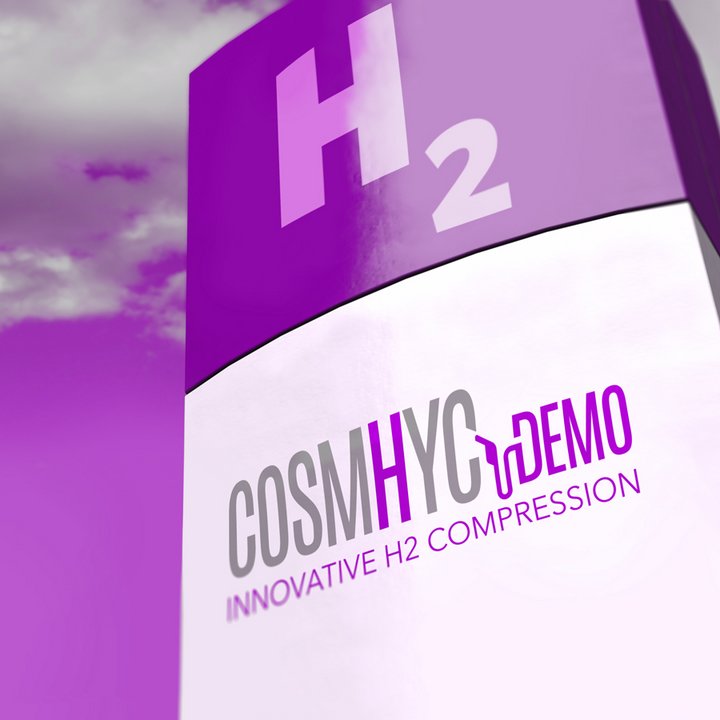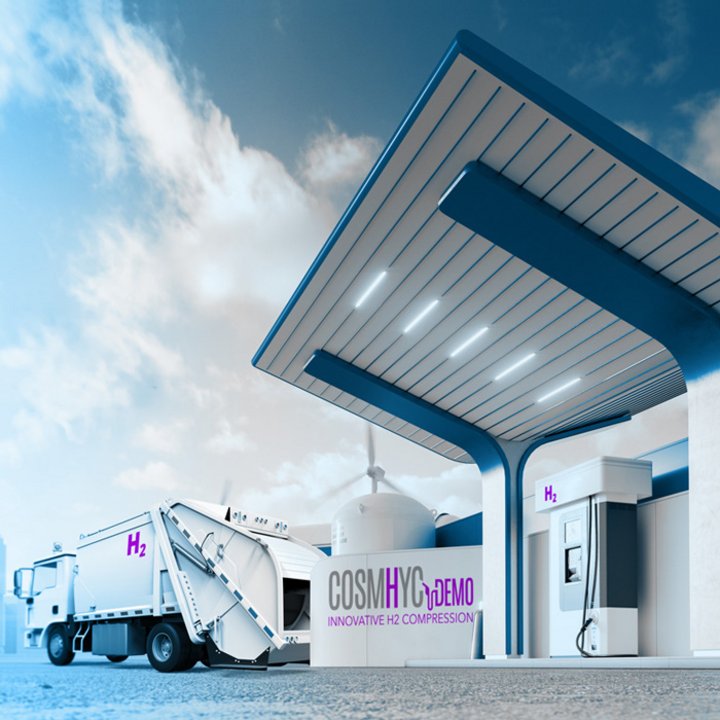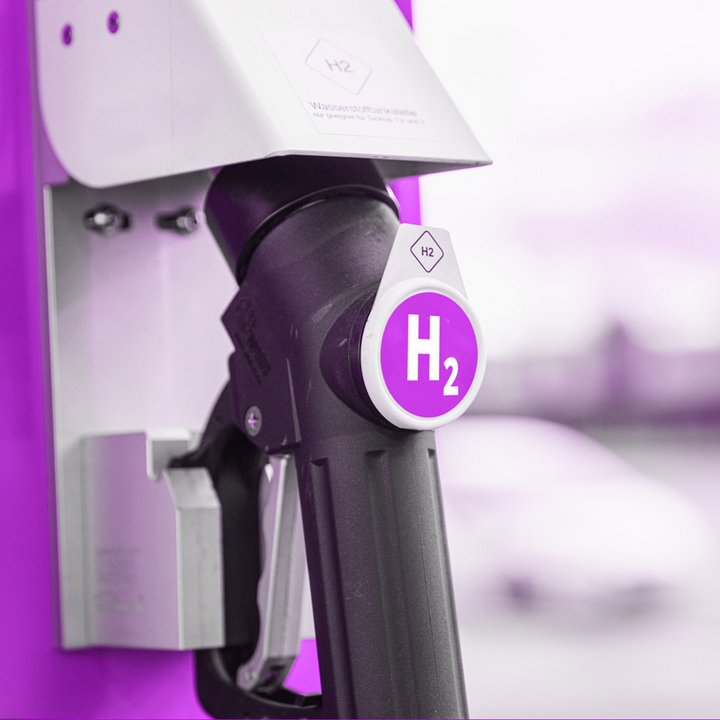COSMHYC XL Project Home
you are here: Home
COSMHYC and COSMHYC XL are research projects.
WELCOME TO THE COSMHYC SERIES
The COSMHYC series includes three projects which, based on the optimal combination of mechanical and metal hydride compression technologies, are developing, prototyping, and demonstrating an innovative compression solution for hydrogen.
- COSMHYC (completed): development and tests of the first COSMHYC prototype in an environment simulating a hydrogen refuelling station
- COSMHYC XL (completed): scale-up of the COSMHYC compression solution for extra-large scale hydrogen refuelling stations
- COSMHYC DEMO (started 2021): demonstration of the COSMHYC compression solution in a public hydrogen refuelling station in Tours, France.
The COSMHYC project already achieved significant breakthroughs compared to the state-of-art. COSMHYC XL and COSMHYC DEMO are further improving compression performances while reducing related costs. The entire series is funded by the Fuel Cell and Hydrogen Joint Undertaking of the European Commission (now Clean Hydrogen Partnership).
Read more about the success story of the COSMHYC project series.
VISION
Hydrogen mobility is gaining unprecedented momentum. Although the number of hydrogen refuelling stations (HRS) is increasing, the refuelling infrastructure remains a major bottleneck for the deployment of Hydrogen mobility. The compressor is the most challenging component in an HRS, in terms of reliability and costs. The COSMHYC projects series addresses this challenge with its innovative compression solution, specifically suited for hydrogen. The COSMHYC DEMO project will be a major step on this innovation journey, intending to demonstrate the compressor’s maturity for commercial application.
Within the COSMHYC DEMO project, the COSMHYC compression solution will be further optimized and integrated into a public HRS in Tours (France). This HRS is a central part of HySOPARC, an initiative implemented by CCTVI (the grouping of municipalities of the Touraine Vallée de l’Indre area) for driving regional development based on H2 technologies. The HRS will supply a fleet of 700 bar passenger vehicles, 350 bar utility vehicles and a 700 bar garbage truck. This is a great opportunity to demonstrate the effectiveness and versatility of the COSMHYC innovative compression solution.


OBJECTIVES AND ACTIVITIES
For demonstrating the COSMHYC compression solution in real operational conditions, the COSMHYC DEMO project focused on:
- Design and construction of the hydrogen refuelling station, integrating the COSMHYC hybrid compressor
- Operation of the refuelling station to demonstrate the maturity of the COSMHYC compression technology
The objective is to demonstrate the reliability, efficiency, and low noise level of the COSMHYC compression solution in real-life conditions, as well as to reduce the costs of the compression and related costs of hydrogen refuelling.
IMPACTS AND BENEFITS
With the integration of the COSMHYC compressor into a real-life hydrogen refuelling station, the project COSMHYC DEMO demonstrates the maturity of the technology and contributes to the roll out of Fuel Cell Electrical Vehicles (FCEVs) by extending the regional and European HRS network.
Servicing a fleet of FCEV with Green hydrogen, COSMHYC DEMO is contributing to the European Union’s Energy Strategy of cutting at least 40% of greenhouse gas emissions until 2030.

HOW THE COSMHYC HYBRID COMPRESSION SOLUTION WORKS AT THE DEMONSTRATION SITE
In COSMHYC DEMO, the COSMHYC hybrid compression solution is integrated in the refuelling station, coupling a metal hydride compressor and a mechanical compressor. This enables to combine the high flow rates and flexibility of mechanical compressors with the reliability and energy efficiency of metal hydrides compression, enabling an overall cost-efficient solution. The metal hydride compressor uses a thermal effect: the hydrides absorb low pressure hydrogen at low temperature and release high-pressure hydrogen at high temperatures, enabling to reduce maintenance costs and noise disturbance, and to replace the use of electricity with waste heat.
